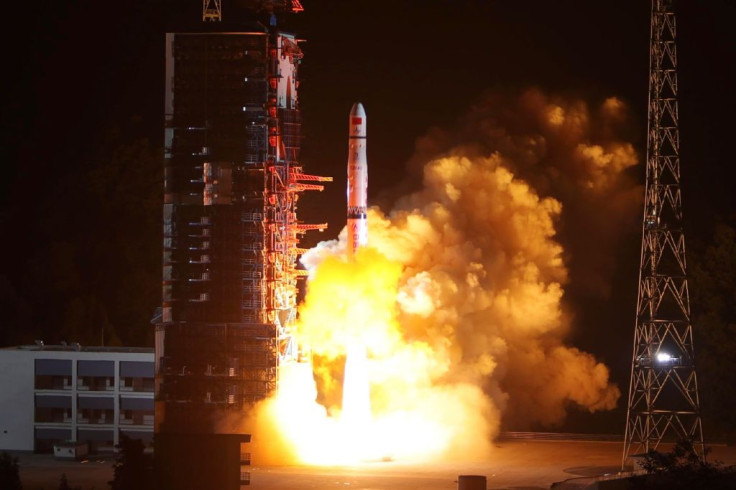Magpie Bridge: China Launches Communication Station For Mission To Moon’s Far Side

China has launched a new communication satellite, dubbed “Magpie Bridge,” as a critical first step to explore the far side of the moon, a task that was never done before in the history of space exploration.
Moon, our only natural satellite, takes 28 days to complete a single orbit around Earth and rotate on its axis. The process results in tidal locking, which means the same side of the moon faces the Earth all the time and the other side remains dark, waiting to be explored.
Though several missions, crewed and uncrewed, have been launched to the lunar surface, no nation has ever seen or explored the mysterious far side due to communication difficulties. Essentially, without a direct line of sight, the data captured on the far side cannot be sent back to Earth.
China plans to launch a mission to the far side by the end of this year, but before any of that could happen, the country needed to address the communication issues. This is why China Aerospace Science and Technology Corporation launched Queqiao relay satellite from Xichang Satellite Launch Center, Southwest China, on May 21.
The launch, conducted with Long March-4C rocket, wasn’t broadcasted, but state news agency Xinhua reported everything went as expected and Queqiao is on its way to a lunar orbit, some 455,000 km from Earth. Once it’s in position (expected in about eight days), a range of tests will be conducted to prepare the relay to serve the mission.
The name Queqiao means “Magpie Bridge” and comes from a Chinese folktale in which birds form an arc with their wings as a link to parted lovers. In this case, the magpie bridge will do the same to establish a connection between Earth and Chang’e 4 – the lunar probe that’ll see a robotic rover and lander touch down on the far side of the Moon.
"The launch is a key step for China to realize its goal of being the first country to send a probe to soft-land on and rove the far side of the Moon," Zhang Lihua, manager of the relay satellite project, told Xinhua.
As the Guardian reported, the probe will also take seeds for growing potatoes and a flowering plant-related to cabbage as part of a lunar mini biosphere experiment.
Among other things, the relay satellite will also carry a radio antenna called Netherlands-China Low-Frequency Explorer, Quartz reported. It will be positioned some 60,000 km behind the moon and is expected to catch ancient, low-frequency signals that may provide critical insight into the early universe or the time that followed right after the Big Bang 13.8 billion years ago.
“Underlying the strong humming sound from the Milky Way, there are some emissions from the early phase of the universe and it will recur at certain frequencies,” Heino Falcke from Radboud University, the developer of this antenna, told Quartz. “If you don’t have much background noise [interference] you may be able to see some certain frequencies and that tells us something about the universe. It requires an extremely quiet environment.”
© Copyright IBTimes 2024. All rights reserved.





















